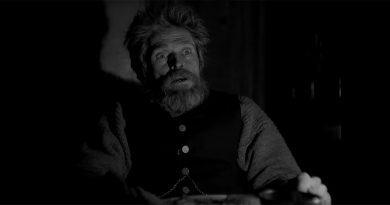Serial Killers, Fascism, and Australian Accents: A Look Back at Snowtown
(Spoiler warning: This article contains a brief summary of the events of the movie.)
Most serial killer media uses its lurid subject matter to titillate, intrigue, and entertain the audience (Seven and Silence of the Lambs are good examples of this). They wallow in outlandish (or even creative) acts of violence because, let’s face it, we love violence and are entertained by it. They are constructed in a way so as to be thrilling, like a Bourne movie. Snowtown is none of that. It’s spare, bleak, direct, and implies far more than it really shows. And it all works to devastating effect. The film is so good at what it does, it prompted one reviewer for Australia’s Channel 9 to remark, “This is as close to a snuff movie as I ever want to see … I don’t care if it’s rooted in truth or not, it’s appalling. I’ve seen it so you don’t have to.” It’s an astounding statement given that there’s only one on-screen death in the entire film. It’s even more astounding when you consider that innocent people are killed en masse in most major blockbusters, and their deaths are little more than color for the plot (see: every Marvel movie). That said, why does Snowtown work so well?
The film follows 16-year-old Jamie Vlassakis, who lives with his mother and siblings in the dirt-poor suburbs of Salisbury North. The neighborhood is a dangerous place and the people are economically vulnerable. Jamie and his siblings are sexually abused by their mother’s boyfriend and Jamie is additionally abused by his older half-brother. Once the neighbors find out about the boyfriend’s crimes, they introduce the family to John Bunting, a charismatic, blue-collar everyman who wins the neighborhood over with his many rants about how pedophiles are plaguing Australia. John helps Jamie run the molester-boyfriend out of town and becomes something of a local hero and a father figure to Jamie. From then on, John slowly brings Jamie under his control, transforming the boy into his puppet. Jamie willingly lets himself fall under as the pair, along with two other recruits, go about murdering 12 people, including members of Jamie’s family. The end.
What makes the movie work is its perspective and its blunt ordinary-ness. Most of the violence is never depicted, and what is shown is woven into the regular rhythms of everyday life in this impoverished suburb. We see Jamie’s transformation into a murderer through his eyes, without any affect or sensationalism. The progression of his character is presented as logical, even though we as viewers know he has fallen under Bunting’s psychopathic spell. It’s these qualities that allow the movie to get under one’s skin. The serial killers here are not freaks, geniuses, or madmen. They are ordinary people living in a woefully ordinary world. They could be us or someone we know. The crimes they commit could be going on next door.
What is also alarming is the movie’s parallels to right wing extremism. John Bunting is a likeable, ordinary, blue collar guy. Despite being an Aussie, he is essentially what many folks would hold up as a “real American”. He’s a man’s man, who works with his hands and calls out the evils present in the world. He gets the community to fall in love with him by ranting about the dangers of pedophiles that are plaguing Australia and how they need to be eliminated. While I have nothing against getting rid of pedophiles, the constant hyping of them as an ever-present, all-consuming threat has been a long-standing tactic of the right (see: Alex Jones’ entire career). In fact, the far-right often uses vague threats to sow fear and consolidate power, whether it’s getting people to be afraid of pedophiles, immigrants, terrorists, etc. The problem is that it never stops there.
And then maybe have a drink or two afterward.
P.S. Adam Arkapaw was Director of Photography for Snowtown and that alone should be reason enough to see it.
(Originally posted February 10, 2019)




